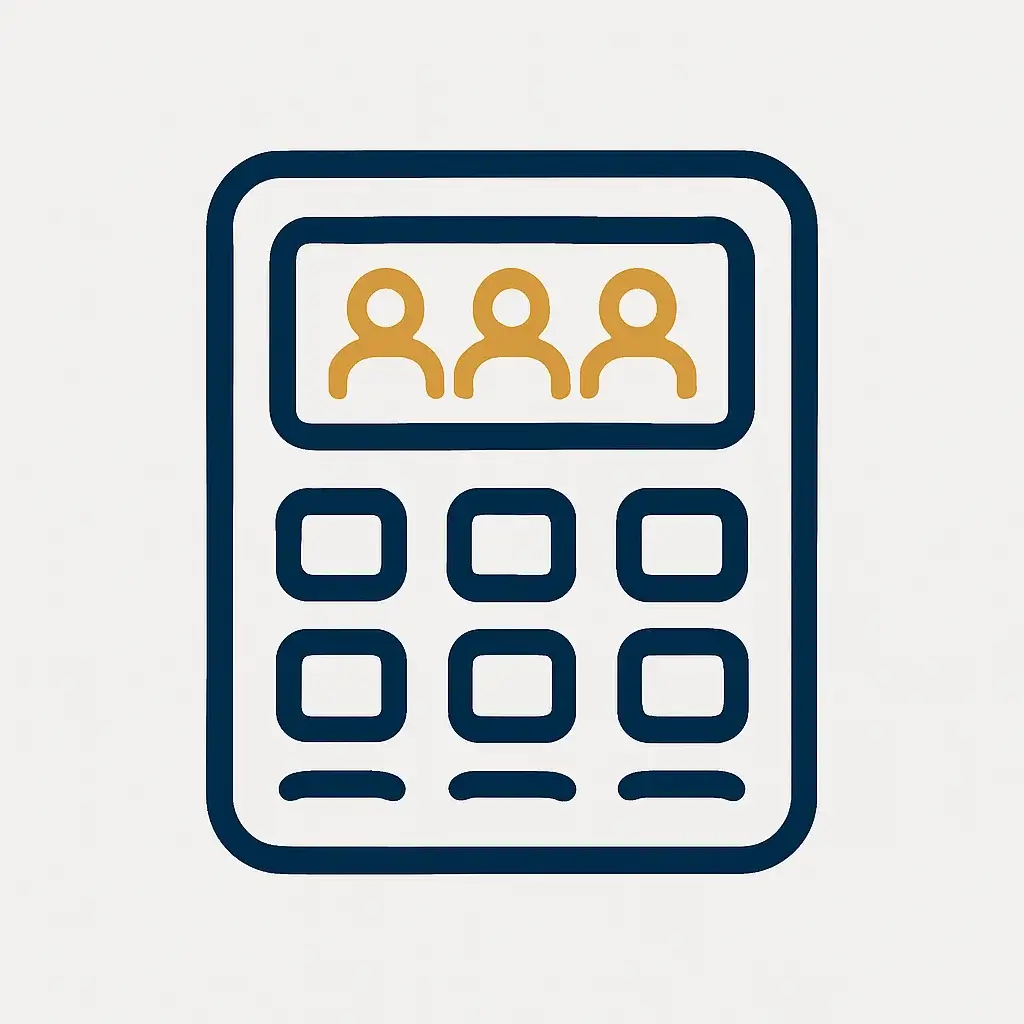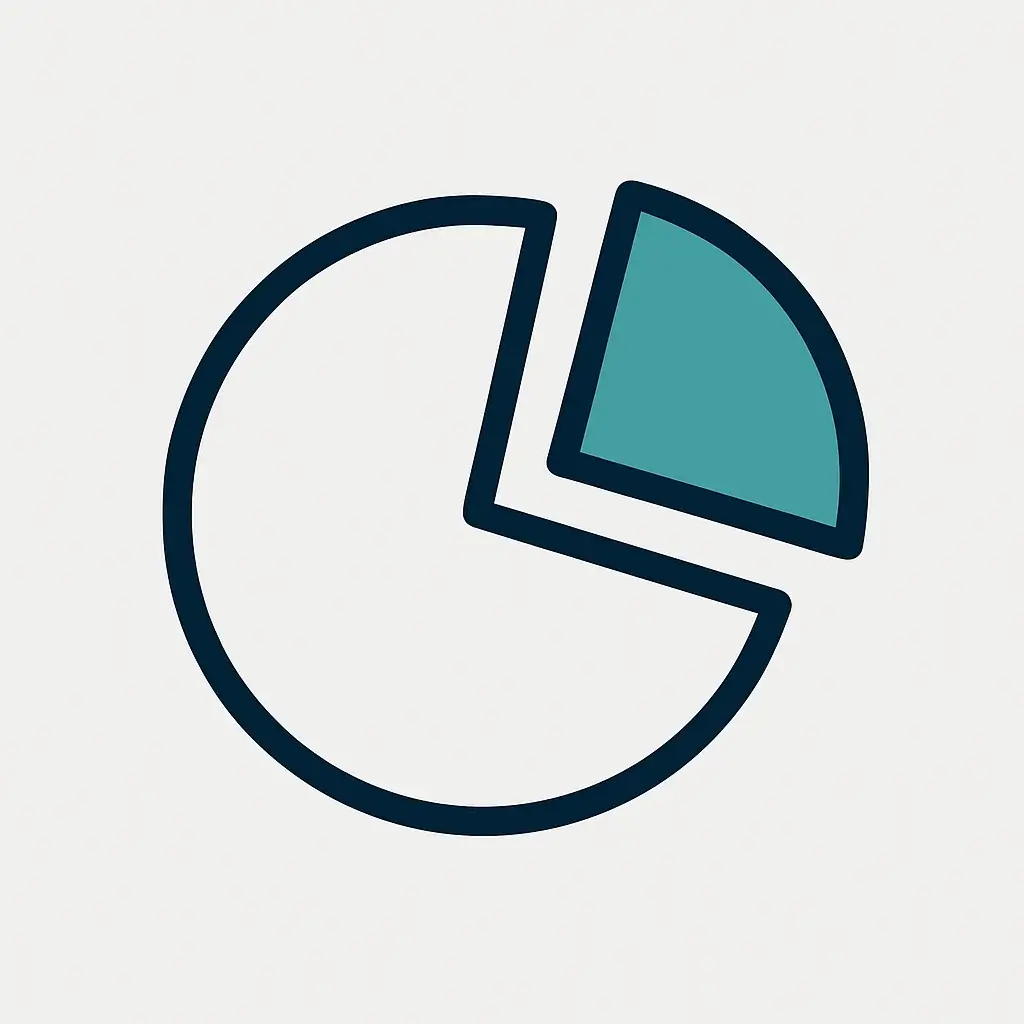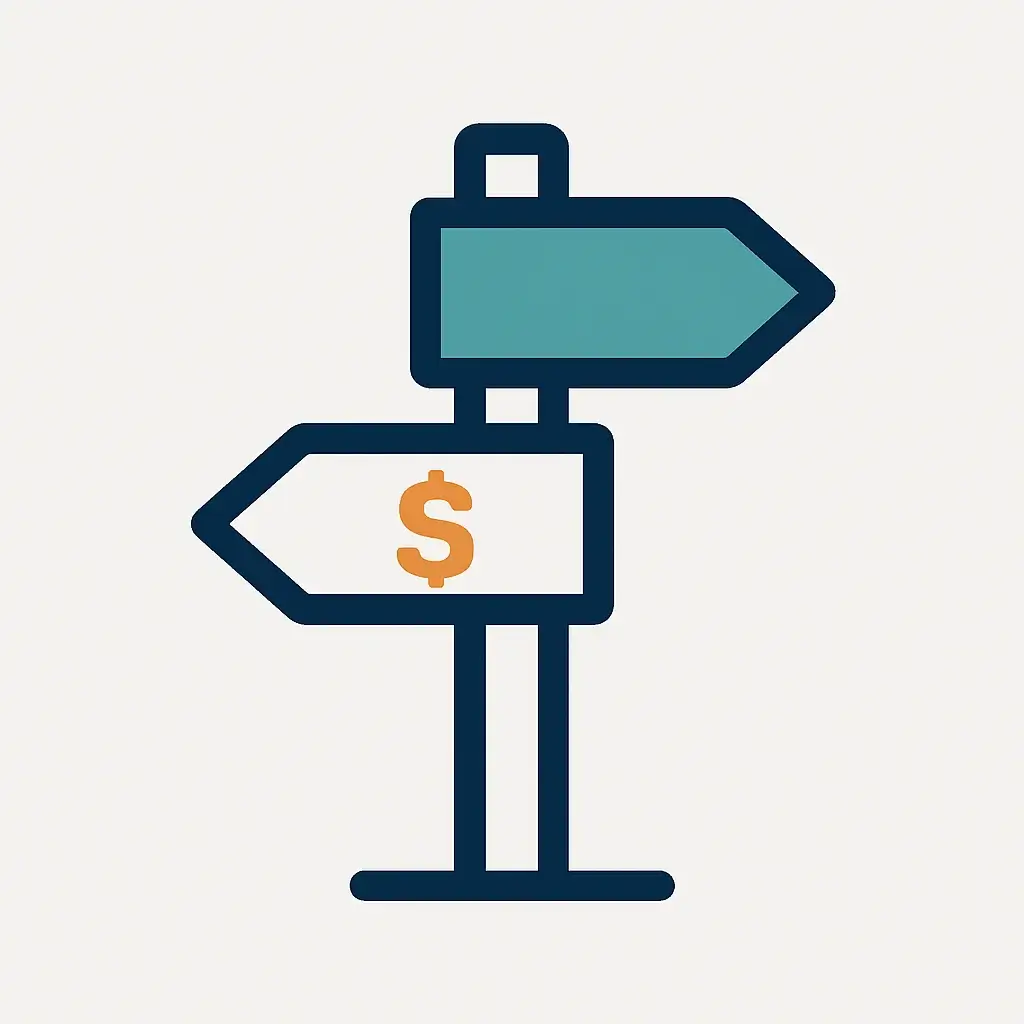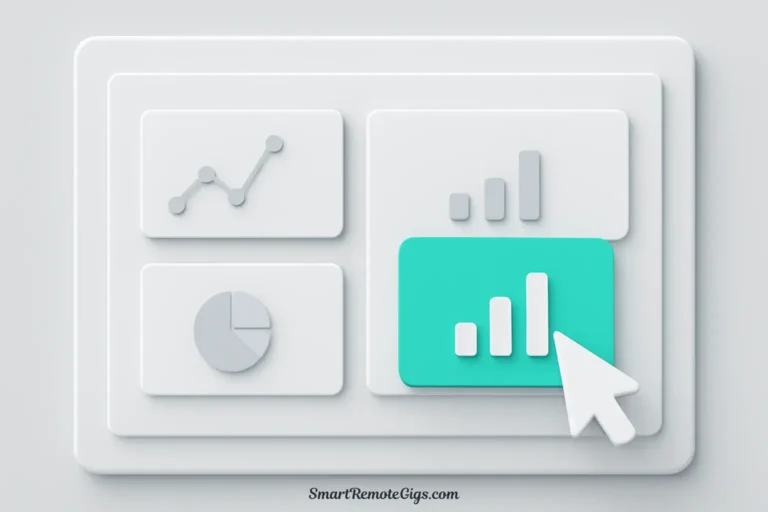If the phrase “financial projections” makes your stomach drop, you’re not alone. Most freelancers and creatives didn’t start their business because they love spreadsheets—they started because they’re great at what they do. But here’s the uncomfortable truth: ignoring your numbers doesn’t make financial stress disappear. It makes it worse.
Financial projections aren’t about becoming an accountant or creating complex forecasting models. They’re about answering one simple question: “How many clients do I need at what price to earn what I want?” That’s it. When you can answer that question with confidence, everything else becomes clearer. You’ll know whether that $500 project is worth your time. You’ll know when it’s time to raise your rates. You’ll stop wondering if you can afford to take a week off.
This guide will walk you through creating freelance financial projections that actually make sense—no MBA required. By the end, you’ll have a clear picture of your income targets, what it takes to reach them, and how to use those numbers to make smarter business decisions every single day.
Why Financial Projections Are Your Freelance Superpower
Most freelancers operate in reactive mode. A client reaches out, they quote a price, they do the work, they invoice, and they hope another client appears before the money runs out. This is the infamous “feast or famine” cycle, and it’s exhausting.
Financial projections flip the script. Instead of reacting to whatever comes your way, you’re proactively steering your business toward specific outcomes. Here’s what changes when you have clear financial projections:
- You escape the feast-or-famine cycle. When you know you need two new clients per month to hit your target, you can plan your marketing and outreach accordingly. No more panic when work slows down—you’ve built a system that consistently brings in the clients you need.
- You know exactly when to raise your rates. If your projection shows you need 20 clients per year at $3,000 each to hit your income goal, but you can realistically only handle 15 clients, the math tells you it’s time to charge $4,000. Your projections give you permission to increase prices based on capacity, not just confidence.
- Tax time becomes manageable instead of terrifying. When you know roughly what you’ll earn and you’ve set aside money throughout the year, April doesn’t arrive with a devastating surprise. The IRS requires self-employed individuals to make quarterly estimated tax payments, and your projections help you calculate what those payments should be.
- You make better decisions about which clients to pursue. That $800 project might sound decent until you realize it would consume time you need for a $4,000 client. Your projections help you see opportunity cost clearly.
- You can actually plan for the future. Want to save for a big purchase? Take a month off to travel? Invest in a course or new equipment? Without projections, these feel like impossible luxuries. With them, you can build these goals into your numbers and make them happen.
Think of financial projections as your business GPS. You wouldn’t drive across the country without knowing your route, estimated travel time, or fuel costs. Yet many freelancers run their businesses without any financial roadmap at all. Your projections give you that map.
The 3 Simple Numbers You Need to Project
Forget complicated cash flow statements and multi-year revenue forecasts. For most freelancers, freelance financial projections come down to three core numbers. Get these right, and everything else falls into place.
1. Your “Survival & Thrive” Income Targets

You need two income targets, not one. The first is your survival number—the absolute minimum you need to cover basic living expenses and essential business costs. The second is your thrive number—what you actually want to earn to live comfortably and build toward your goals.
Calculating your survival number:
Start by listing your essential monthly expenses:
- Rent or mortgage
- Utilities and insurance
- Groceries and basic needs
- Minimum debt payments
- Basic business expenses (software, website hosting, etc.)
Add these up and multiply by 12. This is your annual survival number. For example, if your essential monthly expenses total $3,500, your annual survival number is $42,000. This is your floor—the amount below which you cannot afford to operate.
Calculating your thrive number:
Now add in everything that makes life worth living:
- Savings and retirement contributions
- Debt payoff beyond minimums
- Travel and entertainment
- Professional development
- Emergency fund building
- Quality-of-life upgrades
Maybe your comfortable monthly budget is $5,500. That makes your annual thrive number $66,000. This becomes your primary target—the number you’re actually aiming for.
Pro tip: Your thrive number should feel like a stretch but not impossible. If you earned $40,000 last year, targeting $150,000 this year probably isn’t realistic. A 25-50% increase is ambitious but achievable for most freelancers who are actively growing their business.
2. Your Average Revenue Per Client

This is where many freelancers get stuck because they don’t have consistent pricing or their projects vary wildly. But you need a working average to make projections, even if it’s rough.
If you have existing clients: Look at your last 10-12 completed projects. Add up the total revenue and divide by the number of projects. That’s your current average project value.
Let’s say your last 10 projects brought in $35,000 total. Your average revenue per client is $3,500.
If you’re just starting or changing your model: Research what others in your niche charge for similar work. Look at job boards, freelance platforms, or ask peers in your network. Use industry standards to set a realistic baseline.
Important consideration: Should you calculate based on what you currently charge or what you want to charge? Start with current reality for your first projection, but create a second version with aspirational pricing. This helps you see what’s possible if you increase your rates or shift to higher-value clients.
For retainer clients: If you work on monthly retainers, your average revenue per client is simply your monthly retainer amount multiplied by the average retention period. If clients typically stay for 6 months at $2,000/month, that’s $12,000 average revenue per client.
3. The Number of Clients/Projects You Need

This is where the magic happens—where your income targets meet reality. The formula is beautifully simple:
Number of clients needed = Annual income target ÷ Average revenue per client
Using our earlier examples:
- Thrive target: $66,000
- Average revenue per client: $3,500
- Clients needed: $66,000 ÷ $3,500 = 18.9 (round to 19 clients per year)
Suddenly, “$66,000 per year” transforms into “roughly 1-2 new clients per month.” That’s actionable. You can wrap your head around landing one or two clients per month in a way you can’t with an abstract annual number.
Now take it further. If you need 19 clients per year and you work 48 weeks (accounting for 4 weeks off), that’s about 2.5 weeks per project. Is that realistic given your workflow? If not, you have two options:
- Increase your average project value so you need fewer clients
- Adjust your income target to match your capacity
This is exactly the kind of insight that makes projections valuable. You’re not just hoping for the best—you’re stress-testing your business model with real math.
A Step-by-Step Guide to Your First Financial Projection
Let’s walk through building a complete projection using a realistic example. Meet Sarah, a freelance brand designer who wants to move from scattered projects to a sustainable business.
Sarah’s Current Situation:
- Last year, she earned $48,000 from 16 projects
- Her average project value: $48,000 ÷ 16 = $3,000
- She wants to earn $72,000 this year (her thrive number)
Step 1: Calculate Clients Needed at Current Pricing
$72,000 ÷ $3,000 = 24 clients needed
That’s 2 clients per month, every month. Sarah looks at her calendar and realizes this feels overwhelming—she can really only deliver quality work for about 18 clients per year given her process.
Step 2: Adjust Pricing to Match Capacity
$72,000 ÷ 18 clients = $4,000 per project
Sarah needs to increase her average project value from $3,000 to $4,000. This could mean raising prices across the board, or it could mean being more selective and pursuing only higher-budget clients.
Step 3: Create a Monthly Breakdown
| Month | New Clients Needed | Monthly Revenue Target | Notes |
|---|---|---|---|
| Jan-Mar | 4-5 total | $16,000-$20,000 | Build pipeline early |
| Apr-Jun | 4-5 total | $16,000-$20,000 | Peak season |
| Jul-Aug | 2-3 total | $8,000-$12,000 | Summer slowdown |
| Sep-Dec | 6-7 total | $24,000-$28,000 | Year-end push |
| Total | 18 clients | $72,000 |
Step 4: Account for Reality
Sarah knows from experience that not every lead becomes a client. If her close rate is about 40%, she needs to have conversations with 45 qualified prospects throughout the year to land 18 clients. That’s roughly 4 solid leads per month.
Now her goal isn’t just “make more money”—it’s “have quality conversations with 4 potential clients per month.” That’s something she can build a marketing plan around.
This simple projection just transformed Sarah’s entire approach to her business. She knows her pricing target, her client volume, and even her monthly lead generation needs. This is the power of freelance income goals grounded in actual numbers.
Don’t Forget: Factoring in Expenses and Taxes

Your revenue projections tell only part of the story. What you actually take home—your net income—is what remains after expenses and taxes. This is where many freelancers get caught off guard.
The 30% Rule for Taxes and Business Expenses
A good rule of thumb: set aside 30% of your gross income for taxes and essential business expenses. This might feel conservative, but it’s better to overestimate and have extra money than to underestimate and face a tax crisis.
Here’s roughly how that 30% breaks down:
Taxes (20-25% of gross income):
- Federal income tax: 10-22% depending on your bracket
- Self-employment tax: 15.3% (this covers Social Security and Medicare)
- State income tax: 0-10% depending on your state
The IRS Self-Employed Tax Center has detailed information about your tax obligations, including how to calculate and pay quarterly estimated taxes.
Business Expenses (5-10% of gross income):
- Software and subscriptions (project management, design tools, accounting software)
- Website hosting and domain
- Professional development (courses, books, conferences)
- Marketing costs (ads, portfolio site, business cards)
- Professional services (accountant, lawyer, insurance)
- Office supplies and equipment
- Internet and phone (business portion)
Common Deductible Freelance Expenses
As a self-employed individual, you can deduct legitimate business expenses, which reduces your taxable income. Keep receipts and records for:
- Home office deduction: If you have a dedicated workspace, you can deduct a portion of rent, utilities, and insurance
- Equipment and software: Computers, cameras, design software, project management tools
- Professional development: Courses, workshops, books, and coaching related to your business
- Business insurance: Professional liability, health insurance (partially deductible)
- Marketing and advertising: Website costs, ads, promotional materials
- Business meals: 50% deductible when meeting with clients or prospects
- Travel: Transportation, lodging, and meals for business trips
- Professional services: Accountant, lawyer, and business consultant fees
Going back to Sarah’s example: If she earns $72,000, she should set aside approximately $21,600 (30%) for taxes and expenses. Her projected take-home is closer to $50,400. This is still higher than her $48,000 gross from last year, but now she’s planning properly and won’t be hit with a surprise tax bill.
Pro tip: Open a separate savings account specifically for taxes. Every time you receive payment, immediately transfer 30% to that account. When quarterly tax deadlines arrive, the money is already there, eliminating stress and financial scrambling.
Using Your Projections to Make Smarter Decisions

Numbers are useless unless they change your behavior. The real power of how to forecast freelance income comes from using those projections to guide daily decisions. Here’s how to put your projections to work.
Decision 1: Should I Take This Project?
A potential client offers you $800 for a project that will take about 10-15 hours. Should you take it?
Your projections say you need to average $4,000 per client and serve 18 clients this year. This $800 project is 20% of your target average. Unless you’re certain this will lead to bigger work, it’s pulling you away from finding clients who actually fit your model.
The answer: Only take it if you have spare capacity and it doesn’t displace time you need for client acquisition or higher-value work. Otherwise, gracefully decline or refer them to someone else.
Decision 2: Should I Raise My Rates?
You’re consistently booked solid, turning away inquiries because you don’t have bandwidth. Your projections show you need 18 clients at $4,000 to hit your goal.
What if you raised your rates to $5,000? Now you only need 14-15 clients to hit the same income target. You work less, earn the same (or more), and deliver better results because you’re not burned out.
Your projections give you the confidence to raise rates based on capacity, not just courage.
Decision 3: When Should I Invest in Growth?
You’re considering a $2,000 course on advanced skills in your niche. Is it worth it?
Look at your projections. If that course could help you increase your average project value from $4,000 to $5,000, you’d only need to land two additional clients at the higher rate to recoup your investment. That’s not a cost—it’s a multiplier.
Your projections help you see the ROI of investing in yourself.
Decision 4: Can I Afford to Take Time Off?
You want to take three weeks off this summer. Your projections show you need 18 clients across 12 months, but you’re really only working about 10 months (accounting for holidays and downtime).
Three more weeks off means you’re condensing 18 clients into roughly 9 working months. That’s 2 clients per month instead of 1.5. It’s tight, but doable if you front-load client acquisition in Q1 and Q2.
Without projections, taking time off feels reckless. With them, you can plan for it intelligently.
The Weekly Check-In: Keeping Your Projections Alive
Projections aren’t a one-time exercise. They’re a living tool that guides your business. Here’s a simple weekly practice:
Every Monday morning, ask yourself:
- How many new clients have I signed this month?
- Am I on track with my monthly revenue target?
- How many qualified leads am I currently talking to?
- What needs to happen this week to stay on course?
This takes five minutes and keeps your financial reality front and center. If you’re falling behind, you know immediately and can adjust. If you’re ahead, you can make strategic decisions about how to use that momentum.
For a deeper dive into turning these numbers into actionable milestones, check out How to Set Achievable Freelance Business Goals (S.M.A.R.T.)—your projections are the foundation for setting realistic financial goals that actually drive your business forward.
Your Next Steps: From Projections to Action
Creating financial projections isn’t about predicting the future with perfect accuracy. It’s about replacing vague hopes with concrete targets and using those targets to guide your decisions. Here’s your action plan:
This week:
- Calculate your survival and thrive income targets
- Determine your average revenue per client (current or aspirational)
- Do the simple math: income target ÷ average revenue = clients needed
This month:
- Set up a separate savings account for taxes and transfer 30% of all incoming revenue
- Track your actual numbers against your projections
- List your top 5 deductible business expenses and make sure you’re keeping receipts
This quarter:
- Review your projections against reality—are you on track? Ahead? Behind?
- Adjust your pricing, client targeting, or marketing based on what the numbers reveal
- Use your projections to make at least one big decision (raise rates, decline a project, invest in growth)
Your freelance financial projections aren’t meant to restrict you—they’re meant to free you. Free you from money anxiety, from reactive decision-making, from wondering if you’re on the right track. When you know your numbers, you can run your business with confidence instead of crossing your fingers and hoping for the best.
The difference between a struggling freelancer and a thriving one often isn’t talent—it’s clarity. You now have the tools to create that clarity. The only question left is: will you use them?
True financial control for a freelancer isn’t about complex software or advanced accounting degrees—it’s about simple clarity. You now have the framework to understand your numbers, set realistic targets, and make decisions with confidence. This is the foundation of a truly sustainable and profitable business.
Ready to build your complete business roadmap? Head back to How to Write a Freelance Business Plan (A Simple 1-Page Guide) to put these financial projections into the context of your overall strategy.
A simple guide for freelancers to forecast their income, set clear financial targets, and understand how many clients they need to build a sustainable and profitable business.
Total Time: 1 hour
Calculate Your ‘Survival & Thrive’ Income Targets
First, list all your essential monthly personal and business expenses to determine your ‘survival’ number. Then, add savings, debt payoff, and lifestyle costs to calculate your ‘thrive’ income target. This sets your financial floor and your primary goal.
Determine Your Average Revenue Per Client
Analyze your past 10-12 projects to find your current average project value. If you’re new, research industry standards for your niche. This number is the key to connecting your income goals to your actual work.
Calculate the Number of Clients You Need
Use the formula: (Annual Income Target ÷ Average Revenue Per Client) = Number of Clients Needed. This transforms your abstract annual goal into a concrete, manageable number of clients to land per month or quarter.
Factor in Taxes and Business Expenses
Apply the 30% rule as a starting point. Set aside approximately 30% of your gross projected income to cover self-employment taxes and common business expenses. This helps you calculate your estimated net (take-home) income and avoid tax surprises.
Use Your Projections to Make Business Decisions
Treat your projections as a living tool. Use your numbers weekly or monthly to decide whether to take on new projects, when it’s time to raise your rates, and how to plan for investments or time off. This turns your numbers into a strategic guide.
Tools:
- Calculator or spreadsheet software (e.g., Google Sheets)
- Past invoices or bank statements
- Notebook or document to record calculations






